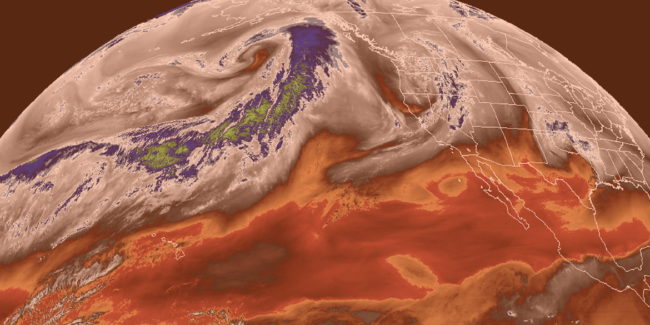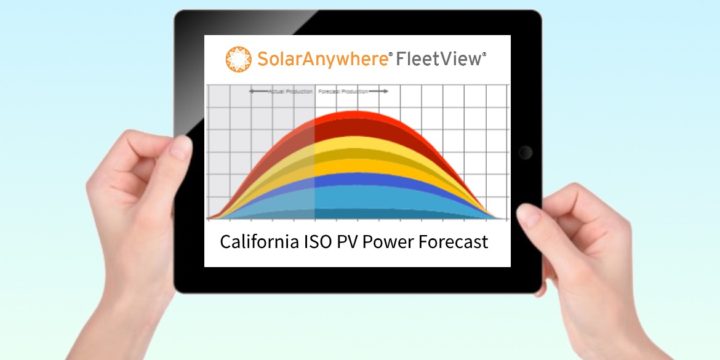No Results Found
The page you requested could not be found. Try refining your search, or use the navigation above to locate the post.
No Results Found
The page you requested could not be found. Try refining your search, or use the navigation above to locate the post.
What’s the value of your solar data? (And why the median approach to solar resource data selection falls short)
Are the solar industry’s pre-construction production estimates too optimistic? Yes, according to several contributions to the “Solar Risk Assessment: 2020” paper published by kWh Analytics. kWh found evidence of “an industry wide bias towards aggressive predictions,”...
Solar resource trends: Changing cloud-cover and AOD, and implications for PV yield
In recent years, we reported on lower-than-expected solar energy production in the Eastern U.S., corroborating PV plant owner observations using SolarAnywhere® insolation data. This prompted us to ask the questions: How does this recent weather activity compare to...
Deployment of utility COVID-19 relief program using PowerClerk®
A Case Study from CLEAResult & Liberty Utilities While coverage of COVID-19 continues to dominate the daily news cycle, new information on the economic challenges facing utilities and their customers continues to emerge. In times like these, many companies are...
New Solar Risk Assessment report provides data-based insights for the solar industry
The latest kWh Analytics “Solar Risk Assessment” report provides solar investors with the latest insights on the evolution of solar photovoltaic (PV) generation risk—and the importance of allowing data-based insights to inform the deployment of capital. This report...
Tucson Electric Power builds a better customer experience with WattPlan®
With the rapid expansion of distributed energy resources (DERs), utilities are offering new types of electric rate plans to their customers. These traditional and renewable rate plans give customers new options, but knowing which rate to choose can be confusing. When...
Working from home? PowerClerk delivers for utilities and their customers
This post explains how to extract maximum value from PowerClerk® in “work from home” situations and outlines a new offer for utilities and energy agencies to use PowerClerk at no cost on COVID-19-related programs. Working from home with no compromises With the broad...
Less coal, sunnier skies increasing solar project value
In many regions around the world, the skies are getting cleaner thanks to controls on air pollution designed to benefit public health. The Eastern U.S. and Europe have seen dramatic improvements in air quality since the 1980s. Coal plant retirements and stricter...
Clean Power Research and EPRI win NYSERDA clean-energy challenge
We’re pleased to announce that Clean Power Research and Electric Power Research Institute (EPRI) have been selected as winners of the New York State Energy Research and Development Authority’s (NYSERDA’s) “Future Grid Challenge.” The project will demonstrate...
Leveraging GOES-17 for more accurate solar data
In February 2018, we blogged about the future of solar forecasting with the new NOAA/NASA GOES-16 satellite. The launch of the GOES-17 satellite held similar promise, but bringing it online ended up being problematic for NOAA/NASA—and provided a few wrinkles for those...
No Results Found
The page you requested could not be found. Try refining your search, or use the navigation above to locate the post.
No Results Found
The page you requested could not be found. Try refining your search, or use the navigation above to locate the post.
Solar forecasting goes “EPIC”
Itron and Clean Power Research are embarking on the next phase of research that will lead to high-fidelity distributed solar photovoltaic (PV) forecasts, and integration of those forecasts into net load forecasts for the California Independent System Operator (ISO)....
Understanding PV variability: Affects of the 2014 California monsoon
While we all know that the energy production of solar PV systems can vary temporally on the short term (e.g., hourly and daily basis), monthly to annual variability can significantly affect the ongoing status of a developed PV solar asset. For developers and owners of...
Using ground plus satellite solar irradiance data to reduce risk, increase project profitability
If you stopped by the Clean Power Research booth (#118) at the most recent Solar Power International (SPI) Conference in Las Vegas, you would have noticed a tall metal frame supporting some measurement equipment. While this structure could have passed for a new-age...
Solar fleet modeling part 3: Balancing the variability of PV
In our previous two posts, we described how to incorporate PV diversity (diversity in both design configuration and geography) in fleet-level modeling, and how to generate high frequency fleet power data with 60-second temporal resolution. In this post, we will show...
Planning for solar part 2: High frequency data
Our previous post discussed how to produce solar PV production profiles for fleets of PV systems. In it we highlighted the importance of including both system diversity (tilt, orientation, shading, etc.), and geographical diversity (system locations and relative...
Planning for solar part 1: Solar fleet modeling
With the proliferation of grid-connected solar—whether from a few large, utility-scale systems, or from thousands of small, behind-the-meter systems—utilities are grappling with integration of these distributed, variable power generation resources. Over the next three...
When it comes to understanding solar resource risk, not all datasets are created equal
When it comes to ensuring that solar investments live up to power-production expectations, one important element is understanding the uncertainty of the solar resource. The lower the uncertainty of the background solar resource, the higher the likelihood a solar...
Intersolar North America 2014: The year of O&M and bankability
I often hear complaints that solar tradeshows aren’t offering much that is new and exciting—but I beg to differ. Every year I see trends emerging—trends that are often overlooked until months after the show. Intersolar North America was no exception. This year I was...
CSI RD&D project results: Forecasting behind-the-meter PV for the California ISO
In a recent NREL report, interviews of 13 operating entities in the Western Interconnection found that “Variable generation (VG) forecasting is widely considered to be a key means of integrating wind and solar power efficiently and reliably as these resources become...
No Results Found
The page you requested could not be found. Try refining your search, or use the navigation above to locate the post.
No Results Found
The page you requested could not be found. Try refining your search, or use the navigation above to locate the post.
Build trust with your customers by facing electric rate changes head-on
By now it’s old news that the utility business model needs to change. According to Utility Dive’s 2016 State of the Electric Utility Survey, only 3% of utility respondents feel the utility business model does not need to evolve. Unsurprisingly, utilities are investing...
Are utilities the key to kick-starting electric vehicle sales in 2016?
After three years of strong growth, plug-in electric vehicle (PEV or ‘EV’) growth fell in 2015. Lower gas prices and consumers waiting for the new 2016 Nissan Leaf (and its longer range) were part of the reason for the decrease in sales, but likely these factors don’t...
2016: The year of enhanced energy price competition
You can’t go anywhere these days without hearing about the price of oil. While in past years that often meant oil prices were skyrocketing, today, oil is threatening to hit 20-year lows (in inflation adjusted dollars). Right now, oil demand is so low, and supply is so...
The proof is in: Integrating PV into the grid is better with behind-the-meter solar forecasts
In recent years, Clean Power Research created a solar forecast method to accurately predict power production of “invisible,” behind-the-meter PV systems—typically those found on homes and commercial buildings. In our approach, forecasts are generated by simulating the...
With electric vehicles and solar, the ‘whole is greater than the sum of its parts’
Is it possible to save more money by combining an electric vehicle (EV) with a home solar PV system rather than considering each individually? Often the answer is yes, and the additional savings can be substantial. To help energy consumers answer that question,...
U.S Department of Energy SunShot Initiative Award Helping Commercial Buildings Get the Most from their Solar Investments
The U.S. Department of Energy SunShot Initiative has awarded funding to EdgePower and Clean Power Research to develop technology that will help commercial buildings maximize the financial return of their solar PV investments. By integrating solar forecast technology...
Solar Power International 2015: Solar in Disneyland
Disneyland provided the backdrop for the Solar Power International (SPI) conference in Anaheim this year. As the biggest solar-focused conference in the U.S., exhibiting at SPI provides a great opportunity to find out firsthand what is on the mind of the industry—that...
Tapping the win-win-win of rate reform
Utilities nationwide are adding variety to residential electric rate plans and reconsidering how to value rooftop solar. Rate changes being considered include demand charges and net metering “2.0” policies that provide customers less than full retail credit. These...
Hot topics at Intersolar NA 2015: ITC, solar + storage and snow!
San Francisco once again played host to the Intersolar North America conference in July. For industry veterans, this year’s event was familiar: crowded registration lines, bumping into old friends and a busy exhibition floor. On the other hand, this year’s hot...


























